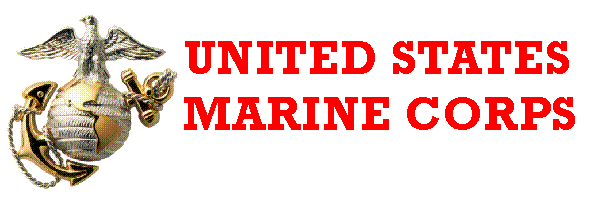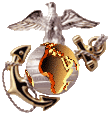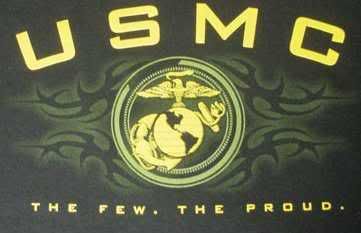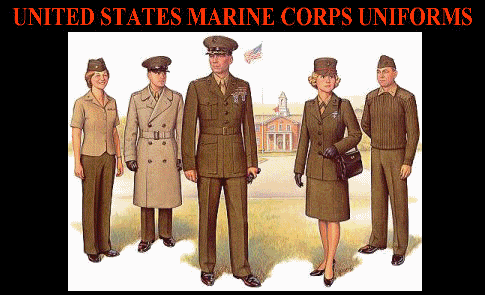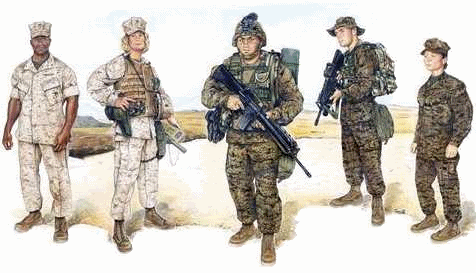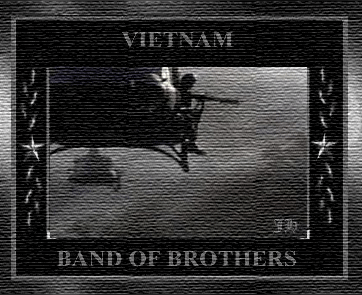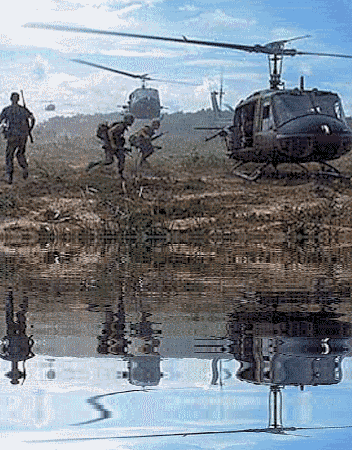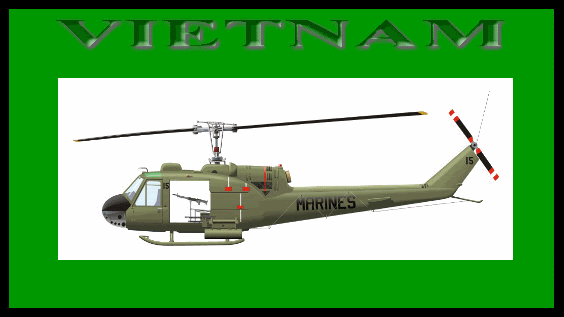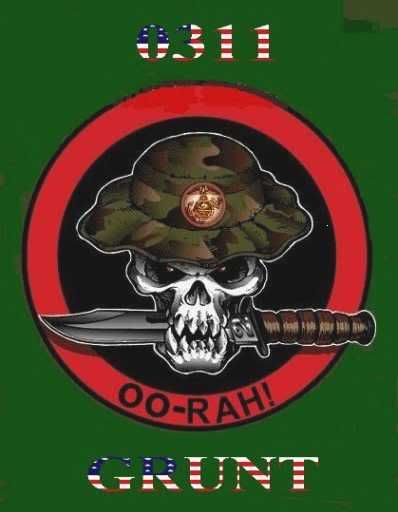
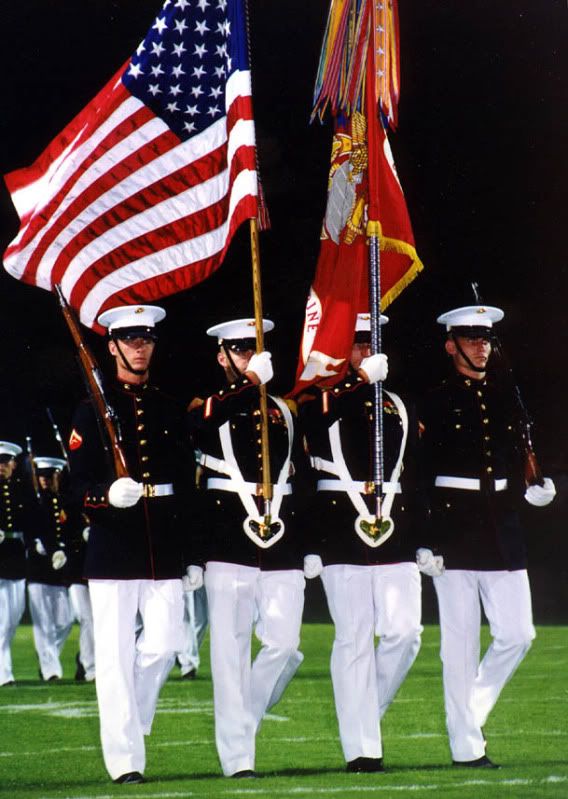


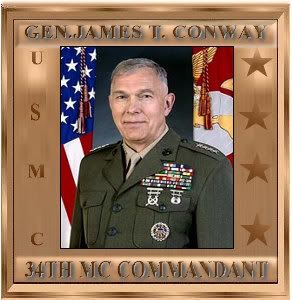
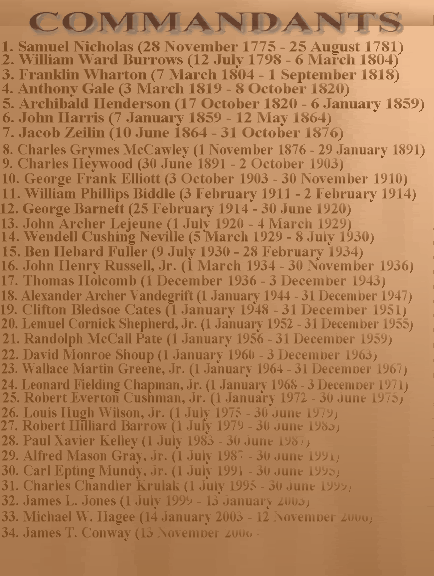

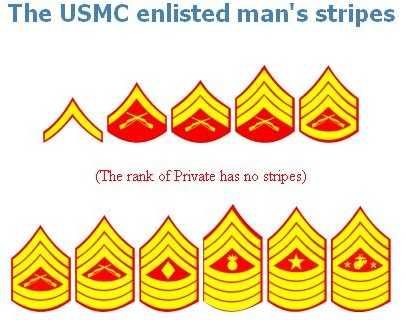

TUN TAVERN
The Tun Tavern (the "Tavern") was a brew house built by Samuel Carpenter in 1685. It was located on Philadelphia's historic waterfront at the corner of Water Street and Tun Alley leading to Carpenter’s Wharf near what is today known as "Penn's Landing."
Historically, it is regarded as the "First Brew House" built in Philadelphia in 1685 and among the very first in the country. Carpenters purpose in building the Tavern was to commence the development of the Philadelphia waterfront, which he intended as a site for various businesses. The Tavern soon developed a reputation for fine beers in the City of Philadelphia and maintained that reputation for over a century. Its name is derived from the old English word "Tun" meaning measured cask, barrel, or keg of beer.
During the years following the inception of the Tavern, several events occurred at the Tavern, which are of historical significance:
A. In 1720, the first meetings of the St. George's Society (forerunner of today's "Sons of the Society of St. George") were held at the Tavern. The Society was a charitable organization founded to assist needy Englishmen arriving in the new colony.
B. In 1732, the first meetings of the St. John's #1 Lodge, a Grand Lodge of the Masonic Temple, were held at the Tavern. The election of the first Worshipful Grand Master of the Grand Lodge of Pennsylvania was held at the Tavern; subsequently Benjamin Franklin was its third Grand Master. The Masonic Temple in Philadelphia recognizes the Tavern as the birthplace of the Masonic teachings in this country; there are estimated to be over 2.3 million Masons in the United States today.
C. In the early 1740's, the then proprietor expanded the Tavern into "Peggy Mullan's Red Hot Beef Steak Club at Tun Tavern," which was known to host George Washington, Thomas Jefferson and Benjamin Franklin and on occasion the lst and 2nd Continental Congress.
D. In 1747, Tun Tavern was the site for the founding of the St. Andrews Society, a charitable group dedicated to helping underprivileged settlers from Scotland settle in Philadelphia.
E. In 1756, Colonel Benjamin Franklin organized the Pennsylvania Militia and utilized the Tavern as a gathering place to recruit the area's first regiment of soldiers to suppress Indian uprisings.
F. On November 10, 1775, Robert Mullan, the proprietor of the Tavern and son of Peggy Mullan, was commissioned by an act of Congress to raise the first two battalions of Marines, under the leadership of Samuel Nicholas, the first appointed Commandant of the Continental Marines. Nicholas's grandfather was also a member of the Tun Tavern Lodge of Free and Accepted Masons and it is this relationship between Mullan, Nicholas and the Tavern which has resulted in Tun Tavern being acknowledged as the birthplace of the United States Marine Corps. There are an estimated three million active and retired U.S. Marines worldwide who have been exposed in their military training to the historical significance of Tun Tavern. Each year on November 10th, around the world Marines toast the Marine's birthplace on the most significant date in the history of the Corps.
This identification of the Marine Corps, the Masons and Philadelphia's brewing genesis with Tun Tavern have been integrally tied to the Company's marketing efforts. Initially these efforts have been focused on the Philadelphia regional area and via widely circulated magazines to Marines.
Information taken from the Tun Tavern Brewing Company Inc. Home Page.

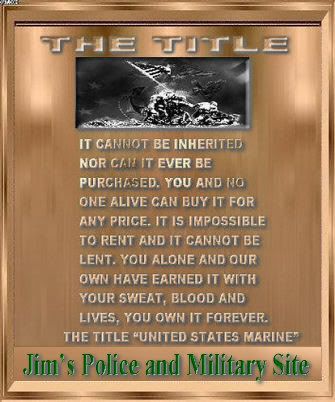

OLD MARINES

MCRD




a. The BATTLE OF BLADENSBURG: In August of 1814, 103 Marines and 400 sailors made a vain attempt to block a force of 4,000 disciplined British troops from advancing on Washington. The Marines stopped three headlong charges before finally being outflanked and driven back. The British then moved down Bladensburg Road to Washington where they burned a number of public buildings before retiring to their vessels in the Chesapeake Bay.
b. The BATTLE OF NEW ORLEANS: In January of 1815, Marines under the command of General Andrew Jackson soundly defeated British Forces that were attacking the city of New Orleans. The British lost approximately 2,000 men while American losses were less than 100.
c. The BATTLE OF BELLEAU WOOD: Marines fought one of their greatest battles in history at Belleau Wood, France, during World War I. Marines helped to crush a German offensive at Belleau Wood that threatened Paris. In honor of the Marines who fought there, the French renamed the area "the Wood of the Brigade of Marines." German intelligence evaluated the Marines as "storm troops" -- the highest rating on the enemy fighting scale. In reference to the Marine's ferocious fighting ability, German troops called their new enemy "Teufelhunden" or "Devildogs," a nickname in which Marines share pride.
d. The BATTLE OF WAKE ISLAND: In 1941, following the air attack on Pearl Harbor, the Japanese struck Wake Island on 8 December. Despite being heavily outnumbered, the Marines mounted a courageous defense before finally falling on 23 December. This small force of Marines caused an extraordinary number of Japanese casualties and damage to the invading force.
e. The BATTLE OF GUADALCANAL: On 7 August 1942, the 1st Marine Division landed on the beaches of Guadalcanal in the Solomon Islands and launched the first United States land offensive of World War II. This battle marked the first combat test of the new amphibious doctrine, and also provided a crucial turning point of the war in the Pacific by providing a base to launch further invasions of Japanese-held islands. Amphibious landings followed on the remaining Solomon Islands including New Georgia, Choiseul (Feint), and Bougainville.
f. The BATTLE OF TARAWA: The Gilbert Islands were the first in the line of advance for the offensive in the Central Pacific. The prime objective was the Tarawa Atoll and Betio Island which had been fortified to the point that the Japanese commander proclaimed that it would take a millon Americans 100 years to conquer it. On 20 November 1943, Marines landed and secured the island within 76 hours, but paid a heavy price in doing so. Because of an extended reef, landing craft could not cross it, and Marines were offloaded hundreds of yards from the beaches. This led to heavy losses from enemy fire. Additionally, many Marines drowned while attempting to wade ashore.
g. The BATTLE OF THE MARIANA ISLANDS: Due to the need for airfields by the Air Force and advanced bases for the Navy, the Marianas were invaded. This was accomplished by landings on the islands of Saipan, Guam, and Tinian. During June and July of 1943, Lieutenant General Holland M. Smith led a combined invasion force of Marines and soldiers that totaled over 136,000. This was the greatest number of troops, up to that time, to operate in the field under Marine command.
h. The BATTLE OF IWO JIMA: On 19 February 1945, Marines landed on Iwo Jima in what was the largest all-Marine battle in history. It was also the bloodiest in Marine Corps history. The Marine Corps suffered over 23,300 casualties. The capture of Iwo Jima greatly increased the air support and bombing operations against the Japanese home islands. Of the savage battle, Admiral Chester W. Nimitz said, "Among the Americans who served on Iwo Island, uncommon valor was a common virtue."
i. The BATTLE OF OKINAWA: In April of 1945, Marines and soldiers landed and secured the island of Okinawa. This marked the last large action of World War II. Due to the death of the Army commander, Major General Roy S. Geiger assumed command of the 10th Army and became the only Marine officer ever to have commanded a field Army.

j. The BATTLE OF THE CHOSIN RESERVOIR: After pushing far into North Korea during November of 1950, Marines were cut off after the Chinese Communist Forces entered the war. Despite facing a 10-division force sent to annihilate them, Marines smashed seven enemy divisions in their march from the Chosin Reservoir. The major significance of this retrograde movement was that Marines brought out all operable equipment, properly evacuated their wounded and dead, and maintained tactical integrity.
k. The SECOND BATTLE OF KHE SANH: In January of 1968, Marines defended the firebase at Khe Sanh from an attack force of two North Vietnamese Army (NVA) divisions. Despite heavy bombardment, the Marines held out for over two and a half months before finally forcing the enemy forces to withdraw.
l. The BATTLE OF HUE CITY: During the Vietnamese holiday of Tet in January of 1968, Communist forces launched a surprise offensive by infiltrating large numbers of their troops into the major population centers of Hue City, South Vietnam. A near division-size unit of NVA troops occupied the city of Hue and the Citadel. Marines fought in built-up areas for the first time since the Korean War foregoing the application of heavy arms to minimize civilian casualties. Fighting was house-to-house with progress measured in yards. The city was secured on 25 February 1968.

MARINE PRAYER
Almighty Father, whose command is over all and whose love never fails, make me aware of Thy presence and obedient to Thy will. Keep me true to my best self, guarding me against dishonesty in purpose and deed and helping me to live so that I can face my fellow Marines, my loved ones, and Thee without shame or fear. Protect my family.
Give me the will to do the work of a Marine and to accept my share of responsibilities with vigor and enthusiasm. Grant me the courage to be proficient in my daily performance. Keep me loyal and faithful to my superiors and to the duties my Country and the Marine Corps have entrusted to me. Help me to wear my uniform with dignity, and let it remind me daily of the traditions which I must uphold.
If I am inclined to doubt, steady my faith; if I am tempted, make me strong to resist; if I should miss the mark, give me courage to try again.
Guide me with the light of truth and grant me wisdom by which I may understand the answer to my prayer.

USMC Terms:
Leatherneck: The nickname Leatherneck has become a universal moniker for a U.S. Marine. The term originated from the wide and stiff leather neck-piece that was part of the Marine Corps uniform from 1798 until 1872. This leather collar, called The Stock, was roughly four inches high and had two purposes. In combat, it protected the neck and jugular vein from cutlasses slashes. On parade, it kept a Marine's head erect. The term is so widespread that it has become the name of the Marine Corps Association monthly magazine, LEATHERNECK.
Gyrene: Around 1900, members of the U.S. Navy began using Gyrene as a jocular derogatory reference to U.S. Marines. Instead of being insulted, the Marines loved it. The term became common by World War I and has been extensively used since that time.
Jarhead: For roughly 50 years, sailors had little luck in their effort to insult Marines by calling them Gyrenes. So, during World War II sailors began referring to Marines as Jarheads. Presumably the high collar on the Marine Dress Blues uniform made a Marine's head look like it was sticking out of the top of a Mason jar. Marines were not insulted. Instead, they embraced the new moniker as a term of utmost respect.
Devil Dogs: The German Army coined this term of respect for U.S. Marines during World War I. In the summer of 1918 the German Army was driving toward Paris. The French Army was in full retreat. In a desperate effort to save Paris, the newly arrived U.S. Marines were thrown into the breach. In June 1918, in bitter fighting lasting for weeks, Marines repeatedly repulsed the Germans in Belleau Wood. The German drive toward Paris sputtered, fizzled, and died. Then the Marines attacked and swept the Germans back out of Belleau Wood. Paris had been saved. The tide of war had turned. Five months later Germany would be forced to accept an armistice. The battle tenacity and fury of the U.S. Marines had stunned the Germans. In their official reports they called the Marines "teufel hunden," meaning Devil Dogs, the ferocious mountain dogs of Bavarian folklore.
Soldiers of the Sea: A traditional and functional term for Marines, dating back to the British in the 1600's

MARINE CORPS MASCOT
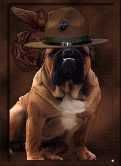
The canine leatherneck is affectionately referred to as "Molly" by her fellow Marines at the "Oldest Post of the Corps." Molly gets her name from the term Molly Marines, the name given to the first women in the United States Marine Corps.
The brindle and white-colored pedigreed English bulldog enlisted in the U.S. Marine Corps Aug. 24, 1995 during a ceremony at Marine Barracks, Washington, D.C.
The duties of this devil dog include serving as official mascot of Marine Barracks, Washington, D.C., and appearing weekly at the renowned Friday Evening Parades held at the barracks during the summer months.
Her performance at the barracks is part of a long tradition of English bulldogs as mascots for the Marine Corps. That tradition was believed to have its roots during World War I when German soldiers referred to the Marines as "devil dogs," comparing their fierce fighting ability to that of wild mountain dogs of Bavarian folklore. Soon afterward, a Marine recruiting poster painted by artist Charles B. Falls appeared depicting a dachshund, attired in a spiked helmet and Iron Cross, fleeing from an English bulldog wearing a helmet with the globe and anchor insignia. The inscription read, "Teufel Hunden -German nickname for U.S. Marines ... Devil Dog Recruiting Station."
Not long after that, Brigadier General Smedley D. Butler, then-Commanding Officer of the Marine Barracks at Quantico, Va., carried the fledgling tradition further by enlisting Private Jiggs into the Marine Corps on Oct. 14, 1922. Jiggs, formally King Bulwark, was sired by the once-famous pedigreed English bulldog Rob Roy and whelped in Philadelphia on May 22, 1921. Jiggs received rapid promotions, becoming a sergeant major on July 17, 1924. He traveled extensively (legend has it that he traveled more than 100,000 miles by sea, land and air), made numerous public appearances, and even shared movie stardom with Lon Chaney in the 1926 Hollywood production of "Tell it to the Marines."
Following Jiggs' death on Jan. 9, 1927, former boxing heavyweight champion James J. (Gene) Tunney, who had served with the Marines in France, continued the tradition by donating English bulldog Jiggs II to the Marines at Quantico. At the same time, the Royal Marines of Great Britain donated an English bulldog pup named Pagett, who was said to have been one of the top 20 English bulldogs in Great Britain at that time. Pagett traveled with the Marine baseball team, but had an early reputation of disciplinary infractions, such as "chasing a blonde stenographer down the hall," and "biting the hand that fed him," before succumbing to heat exhaustion in 1928.
By then public opinion had already formed what is now a strong association between the English bulldog and the Marine Corps.
It was in recognition of that association that the barracks acquired PFC Chauncy in 1956. As in all traditions, however, the tale had a humble beginning. Chauncy, who had not attended Ceremonial Drill School, was not allowed to perform during ceremonies. He was merely a spectator in the stands along with the commandant and the barracks commanding officer.
However, the tradition of English bulldog mascots at Marine Barracks Washington, D.C., was begun. Chauncy's successor, Chesty I, (named in honor of legendary Marine Lieutenant General Lewis "Chesty" Puller) became a part of the very first Evening Parade - July 5, 1957. Chesty I, and his successors, became prominent parade participants with their strutting ceremonial strolls down Center Walk during the Friday Evening parades at the "Oldest Post of the Corps."
With their own official Service Record Books, the mascots are treated no differently than other barracks Marines. Well, almost.
Chesty II, who was constantly violating rules and regulations and had no respect for his superiors, took an unauthorized absence. Chased by a corporal and two privates, he streaked past the main gate and made an unauthorized liberty call on Washington, D.C., for two days. He was returned in a paddy wagon ... just in time for a Friday Evening parade.
During President Lyndon B. Johnson's visit to Marine Barracks on Sept. 22, 1967, Chesty V strutted down to the middle of the parade field, halted, sat and looked the President directly in the eye. The President smiled, turned to the Barracks Commanding Officer, Colonel Joseph Fegan Jr., and said, "I'm familiar with the Marine Corps' fantastic training accomplishments, but this is most unusual. Well done!" Fortunately, the President did not know that the incident had not been planned. Staff Sgt. Chesty V, who retired in August 1971, tore up several uniforms and took a nip at General Lewis Walt's French poodle, nearly causing him to miss his second award of the Good Conduct Medal.
However troublesome, though, the canine crowd-pleasers are a formal and indelible part of Marine Barracks Washington, D.C., and the Marine Corps' image.
Commercial artists have picked up on the association between the Corps and the bulldog over the years and have immortalized it on T-shirts and coffee mugs. Although other animals have been used as unit mascots during the Marine Corps' long history, it is the English bulldog that has remained a constant companion to the few and the proud. Renowned for their tough, muscular and aggressive appearance, the English bulldogs have long suited the Corps' need for a symbol and a faithful mascot. Prone to weight problems, often reluctant to obey orders and always the last to fall into formation for physical training, the dogs have also always found favor with struggling junior troops, who are relieved that the sergeant major has someone besides them to bark.

DEFINITION OF A MARINE
Marines come in all sizes, weights, states of sobriety, misery, and confusion. He is shy as a fox, has the nerve of a dope addict, the stories of an old sailor, the sincerity of a liar, and the appetite of a horse. He is unreliable, irresistible and indestructible.
A MARINE is a magical creature, you can lock him out of your house, but not your heart. You can take him off your mailing list but not off your mind. Marines are found everywhere: in bars, behind bars, in battle, in love, on leave and in debt.
No one can write so seldom and yet think so much of you. No one else can get so much enjoyment out of a letter, civilian clothes, or a six pack of beer. A Marine is lazy with a deck of cards, a millionaire without a cent, brave without a grain of sense. He is the protector of America, with the latest copy of Playboy in his back pocket.
When he wants something, it's usually a three day pass, a five dollar bill or a standby home. Girls love them, mothers tolerate them, the United States support them, and somehow they manage to live together. No woman can tame him, no man can beat him.
He likes girls, females, women, ladies, and members of the opposite sex. He dislikes answering letters, wearing his uniforms, his superiors, getting up for reveille, Marine Corps chow, basic training, and the week before payday. You might as well give in. He is your long distance lover, your bright eyed good for nothing bundle of worry. Even all your shattered dreams become insignificant when he comes home to you and greets you with those innocently spoken words:

Semper Fidelis
More than a motto, a way of life
Semper Fidelis distinguishes the Marine Corps bond from any other. It goes beyond teamwork – it is a brotherhood and lasts for life.
Latin for "always faithful," Semper Fidelis became the Marine Corps motto in 1883. It guides Marines to remain faithful to the mission at hand, to each other, to the Corps and to country, no matter what.
Becoming a Marine is a transformation that cannot be undone, and Semper Fi reminds us of that. Once made, a Marine will forever live by the ethics and values of the Corps. There is no such thing as an ex-Marine.

(excerpt from Warrior Culture of the U.S. Marines, copyright 2001 Marion F. Sturkey)
CODE OF CONDUCT: Standard conduct expected for all soldiers throughout the world.
Article I: I am an American, fighting in the armed forces which guard my country and our way of life. I am prepared to give my life in their defense.
Article II: I will never surrender of my own free will. If in command I will never surrender the members of my command while they still have the means to resist.
Article III: If I am captured, I will continue to resist by all means available. I will make every effort to escape and aid others to escape. I will accept neither parole nor special favors from the enemy.
Article IV: If I become a prisoner of war, I will keep faith with my fellow prisoners. I will give no information nor take part in any action which might be harmful to my comrades. If I am senior, I will take command. If not, I will obey the lawful orders of those appointed over me and will back them up in every way.
Article V: When questioned, should I become a prisoner of war, I am required to give name, rank, service, number, and date of birth. I will evade answering further questions to the utmost of my ability. I will make no oral or written statements disloyal to my country and its allies or harmful to their cause.
Article VI: I will never forget that I am an American, responsible for my actions, and dedicated to the principles which made my country free. I will trust in my God and in the United States of America.

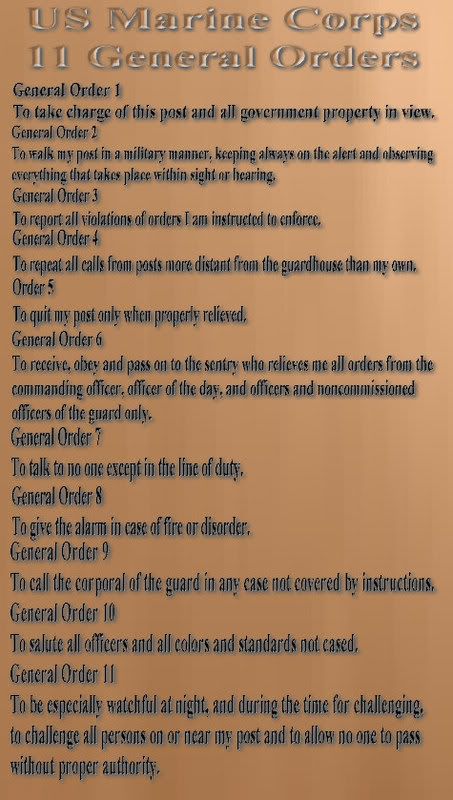
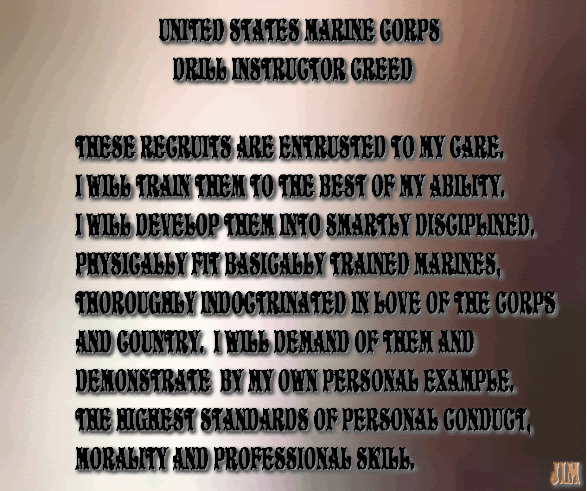
(excerpt from Warrior Culture of the U.S. Marines, copyright 2001 Marion F. Sturkey)
Marine NCO Creed
I am the backbone of the United States Marine Corps, I am a Marine Non-Commissioned Officer. I serve as part of the vital link between my commander (and all officers) and enlisted Marines. I will never forget who I am or what I represent. I will challenge myself to the limit and be ever attentive to duty. I am now, more than ever, committed to excellence in all that I do, so that I can set the proper example for other Marines. I will demand of myself all the energy, knowledge and skills I possess, so that I can instill confidence in those I teach. I will constantly strive to perfect my own skills and to become a good leader. Above all I will be truthful in all I say or do. My integrity shall be impeccable as my appearance. I will be honest with myself, with those under my charge and with my superiors. I pledge to do my best to incorporate all the leadership traits into my character. For such is the heritage I have received from that long, illustrious line of professionals who have worn the bloodstripe so proudly before me. I must give the very best I have for my Marines, my Corps and my Country for though today I instruct and supervise in peace, tomorrow, I may lead in war.
(excerpt from Warrior Culture of the U.S. Marines, copyright 2001 Marion F. Sturkey)
SNCO CREED
I am a Staff Noncommissioned Officer in the United States Marine Corps. As such, I am a member of the most unique group of professional military practitioners in the world. I am bound by duty to God, Country, and my fellow Marines to execute the demands of my position to and beyond what I believe to be the limits of my capabilities.
I realize I am the mainstay of Marine Corps discipline, and I carry myself with military grace, unbowed by the weight of command, unflinching in the execution lawful orders, and unswerving in my dedication to the most complete success of my assigned mission.
Both my professional and personal demeanor shall be such that I may take pride if my juniors emulate me, and knowing perfection to lie beyond the grasp of any mortal hand, I shall yet strive to attain perfection that I may ever be aware of my needs and capabilities to improve myself. I shall be fair in my personal relations, just in the enforcement of discipline, true to myself and my fellow Marines, and equitable in my dealing with every man.

(excerpt from Warrior Culture of the U.S. Marines, copyright 2001 Marion F. Sturkey)
MARINE CORPS VALUES
Honor: Honor requires each Marine to exemplify the ultimate standard in ethical and moral conduct. Honor is many things; honor requires many things. A U.S. Marine must never lie, never cheat, never steal, but that is not enough. Much more is required. Each Marine must cling to an uncompromising code of personal integrity, accountable for his actions and holding others accountable for theirs. And, above all, honor mandates that a Marine never sully the reputation of his Corps.
Courage: Simply stated, courage is honor in action -- and more. Courage is moral strength, the will to heed the inner voice of conscience, the will to do what is right regardless of the conduct of others. It is mental discipline, an adherence to a higher standard. Courage means willingness to take a stand for what is right in spite of adverse consequences. This courage, throughout the history of the Corps, has sustained Marines during the chaos, perils, and hardships of combat. And each day, it enables each Marine to look in the mirror -- and smile.
Commitment: Total dedication to Corps and Country. Gung-ho Marine teamwork. All for one, one for all. By whatever name or cliche, commitment is a combination of (1) selfless determination and (2)a relentless dedication to excellence. Marines never give up, never give in, never willingly accept second best. Excellence is always the goal. And, when their active duty days are over, Marines remain reserve Marines, retired Marines, or Marine veterans. There is no such thing as an ex-Marine or former-Marine. Once a Marine, always a Marine. Commitment never dies.
The three Corps Values: honor, courage, commitment. They make up the bedrock of the character of each individual Marine. They are the foundation of his Corps. These three values, handed down from generation to generation, have made U.S. Marines the Warrior Elite. The U.S. Marine Corps: the most respected and revered fighting force on earth.

1944: 4-Man Fire Team
Fewer Marines, greater firepower
As a relatively small force, Marines have always had to be more adaptable than other military branches. In 1944, to increase the combat power of their fire teams, the Marine Corps began using two four-man fire teams within the standard eight-man squad.
The Marines divided teams into two four-man units, including two riflemen carrying Browning Automatic Rifles (BARs) and a Thompson machine gunner, among others. The team with the BAR men provided covering fire, while the team with the Tommy gun leader attacked the enemy.
This efficient, high-firepower tactic was used successfully in World War II, and its core strategy is still used today.
WOMEN MARINES

(excerpt from Warrior Culture of the U.S. Marines, copyright 2001 Marion F. Sturkey)
WOMEN MARINES:
In secret, Lucy Brewer became the first woman to serve in the Marine Corps. Disguised as a gung-ho man, she served in the Marine Detachment aboard the USS Constitution during the War of 1812.
Over 100 years later on 12 August 1918, the Secretary of the Navy granted authority to enroll women for clerical duty in the Marine Corps Reserve. The next day, Opha M. Johnson enlisted and became the first official Woman Marine. During the remainder of World War I, 305 women enlisted to "free a man to fight." Over 20 years later during World War II, roughly 1000 officers and 18,000 enlisted women served, led by Col. Ruth C. Streeter. During the last year of the war, all available male Marines were battling the Japanese in the Pacific. In their absence, Women Marines represented over half of the personnel at Marine Corps bases in the continental United States.
A year after the end of the war, the Marine Corps retained a small nucleus of Women Marines in a postwar reserve. But, in 1948 Congress passed the Women's Armed Forces Integration Act, which authorized women in the regular component of the Corps. At the time, women could not constitute over two percent of the total force and could not hold permanent rank above lieutenant colonel. Katherine A. Towle was appointed Director of Women Marines with the temporary rank of colonel. The following year the Corps set up a recruit training battalion for women recruits at Parris Island, and a women's officer training class at Quantico.
During the Vietnam war in March 1967, MSgt. Barbara Dulinsky requested reassignment from the United States to Vietnam. She was transferred to the main military headquarters (MACV) in Saigon, the first Woman Marine to be sent to a country torn by war. But, seven years later the Commandant authorized Women Marines to serve with specialized rear echelon elements of the Fleet Marine Force. Still, these women were prohibited from deployment with combat units, or units which could conceivably be engaged in combat. Women were specifically banned from all infantry, artillery, and armor units, and they could not serve as members of aircrews.
In May 1978, BGen. Margaret Brewer became the first general grade Woman Marine, serving as Director of Information. Twenty-two years later roughly 1000 Women Marines deployed to Southwest Asia in 1990-1991, prior to and during the Gulf War. Later, because of legal mandates, the Corps was forced to accept women into Naval Aviation pilot training. In July 1993, 2ndLt. Sarah Deal became the first such Woman Marine to begin training. She graduated and received her Golden Wings on 21 April 1995.
The next year MGen. Carol A. Mutter became the first two-star Woman Marine. Two years later she was promoted again, the first Woman Marine to wear three stars. By the turn of the century in the year 2000, over 700 Woman Marines comprised about four percent of the officer corps. And, slightly over 8000 Woman Marines made up roughly five percent of the active enlisted force.
The elite Marine Corps remains the only U.S. armed service with the wisdom and courage to maintain separate boot camp training units for men and women recruits. Despite the childish whining of liberal theorists, despite the rabid ranting of ignorant politically correct zealots, the Marine Corps has not faltered. Basic training for men and women will remain separate -- but equal. All who qualify will earn the title, United States Marine.
US Marines
are the most peculiar breed of human beings I have ever witnessed. They treat service as if it was some kind of cult, plastering their emblem on almost everything they own, making themselves look like insane fanatics with haircuts to ungentlemanly lengths, worshipping their Commandant almost as if he was a god, and making wierd animal noises like a gang of savages. They'll fight like rabid dogs at the drop of a hat just for the sake of a little action, and are the cockiest sons of bitches I have ever known. Most have the foulest mouths and drink well beyond man's normal limits, but their high spirits and sense of brotherhood set them apart and, generally speaking, the United States Marines I've come in contact with are the most professional soldiers and the finest men and women I have ever had the pleasure to meet...
... an anonymous Canadian citizen

SLOGANS
(excerpt from Warrior Culture of the U.S. Marines, copyright 2001 Marion F. Sturkey)
*
First to Fight: The media in the United States began using this term to describe U.S. Marines during World War I. And, for once the media was right. Marines have served in the vanguard of every American war since the founding of the Corps in 1775. They have carried out over 300 assaults on foreign shores, from the arctic to the tropics. Historically, U.S. Marines are indeed the first to fight.
*
Once a Marine, Always a Marine: This truism is now the official motto of the Marine Corps League. The origin of the statement is credited to a gung-ho Marine Corps master sergeant, Paul Woyshner. During a barroom argument he shouted, "Once a Marine, always a Marine!" MSgt. Woyshner was right. Once the title "U.S. Marine" has been earned, it is retained. There are no ex-Marines or former-Marines. There are (1) active duty Marines, (2) retired Marines, (3) reserve Marines, and (4) Marine veterans. Nonetheless, once one has earned the title, he remains a Marine for life.
*
Gung-Ho: The Chinese used this term to describe Marines in China around 1900. In the Chinese language, gung-ho means working together. That's what the "American Marines" were always doing, "working together," the Chinese explained. The term stuck to Marines like glue. Today it conveys willingness to tackle any task, or total commitment to the Corps.
*
Good night, Chesty, wherever you are: This is an often-used tribute of supreme respect to the late and legendary LtGen. Lewis B. "Chesty" Puller, USMC. Chesty! Without a doubt he was the most outspoken Marine, the most famous Marine, the Marine who really loved to fight, the most decorated Marine in the history of the Corps. Chesty enlisted as a Private. Through incredible fortitude and tenacity he became a living legend. He shouted battle orders in a bellow and stalked battlefields as though impervious to enemy fire. Chesty rose to the rank of Lieutenant General. He displayed an abiding love for the Magnificent Grunts, especially the junior enlisted men who did the majority of the sacrificing and dying, and utter contempt for all staff pogues of whatever rank. During his four wars, he became the only Marine to be awarded the Navy Cross five times. The Marines' Marine! "Goodnight, Chesty, wherever you are."
*
A Few Good Men: On 20 March 1779 in Boston, Capt. William Jones, USMC, advertised for "a few good men" to enlist in the Corps for naval duty. The term seemed ideally suited for Marines, mainly because of the implication that "a few" good men would be enough. This term has survived for over 200 years and has been synonymous with U.S. Marines ever since.
"Semper Fi"
Site Navigation..
Merchandise..
Marine Videos
Main...
Home "OORAH"
"SEMPER FIDELIS"
TRADITIONS
Popular Topics USMC - Rifle Creed
USMC - Code of Conduct
11 General Orders
USMC Quotes
USMC Leadership Traits
Commandmants USMC
Marine Corps Prayer
The Crucible
Silent Drill Platoon
Evening Parade
8th and I
Teufelhunden Links
MCRD "Marine Corps Recruiting Depot"
MCRD's
MCRD Parris Island SC
MCRD San Diego

Brief History of the United States Marine Corps
On November 10, 1775, the Continental Congress meeting in Philadelphia passed a resolution stating that "two Battalions of Marines be raised" for service as landing forces with the fleet. This resolution, established the Continental Marines and marked the birth date of the United States Marine Corps. Serving on land and at sea, these first Marines distinguished themselves in a number of important operations, including their first amphibious raid into the Bahamas in March 1776, under the command of Captain (later Major) Samuel Nicholas. Nicholas, the first commissioned officer in the Continental Marines, remained the senior Marine officer throughout the American Revolution and is considered to be the first Marine Commandant. The Treaty of Parris in April 1783 brought an end to the Revolutionary War and as the last of the Navy's ships were sold, the Continental Navy and Marines went out of existence.
Following the Revolutionary War and the formal re-establishment of the Marine Corps on 11 July 1798, Marines saw action in the quasi-war with France, landed in Santo Domingo, and took part in many operations against the Barbary pirates along the "Shores of Tripoli". Marines participated in numerous naval operations during the War of 1812, as well as participating in the defense of Washington at Bladensburg, Maryland, and fought alongside Andrew Jackson in the defeat of the British at New Orleans. The decades following the War of 1812 saw the Marines protecting American interests around the world, in the Caribbean, at the Falkland Islands, Sumatra and off the coast of West Africa, and also close to home in the operations against the Seminole Indians in Florida.
During the Mexican War (1846-1848), Marines seized enemy seaports on both the Gulf and Pacific coasts. A battalion of Marines joined General Scott's army at Pueblo and fought all the way to the "Halls of Montezuma," Mexico City. Marines also served ashore and afloat in the Civil War (1861-1865). Although most service was with the Navy, a battalion fought at Bull Run and other units saw action with the blockading squadrons and at Cape Hatteras, New Orleans, Charleston, and Fort Fisher. The last third of the 19th century saw Marines making numerous landings throughout the world, especially in the Orient and in the Caribbean area.
Following the Spanish-American War (1898), in which Marines performed with valor in Cuba, Puerto Rico, Guam, and the Philippines, the Corps entered an era of expansion and professional development. It saw active service in the Philippine Insurrection (1899-1902), the Boxer Rebellion in China (1900). and in numerous other nations, including Nicaragua, Panama, Cuba, Mexico, and Haiti.
In World War I the Marine Corps distinguished itself on the battlefields of France as the 4th Marine Brigade earned the title of "Devil Dogs" for heroic action during 1918 at Belleau Wood, Soissons, St. Michiel, Blanc Mont, and in the final Meuse-Argonne offensive. Marine aviation, which dates from 1912, also played a part in the war effort, as Marine pilots flew day bomber missions over France and Belgium. More than 30,000 Marines had served in France and more than a third were killed or wounded in six months of intense fighting.
During the two decades before World War II, the Marine Corps began to develop in earnest the doctrine, equipment, and organization needed for amphibious warfare. The success of this effort was proven first on Guadalcanal, then on Bougainville, Tarawa, New Britain, Kwajalein, Eniwetok, Saipan, Guam, Tinian, Peleliu, Iwo Jima, and Okinawa. By the end of the war in 1945, the Marine Corps had grown to include six divisions, five air wings, and supporting troops. Its strength in World War II peaked at 485,113. The war cost the Marines nearly 87,000 dead and wounded and 82 Marines had earned the Medal of Honor.
While Marine units took part in the post-war occupation of Japan and North China, studies were undertaken at Quantico, Virginia, which concentrated on attaining a "vertical envelopment" capability for the Corps through the use of helicopters. Landing at Inchon, Korea in September 1950, Marines proved that the doctrine of amphibious assault was still viable and necessary. After the recapture of Seoul, the Marines advanced to the Chosin Reservoir only to see the Chinese Communists enter the war. After years of offensives, counter-offensives, seemingly endless trench warfare, and occupation duty, the last Marine ground troops were withdrawn in March 1955. More than 25,000 Marines were killed or wounded during the Korean War.
In July 1958, a brigade-size force landed in Lebanon to restore order. During the Cuban Missile Crisis in October 1962, a large amphibious force was marshaled but not landed. In April 1965, a brigade of Marines landed in the Dominican Republic to protect Americans and evacuate those who wished to leave.
The landing of the 9th Marine Expeditionary Brigade at Da Nang in 1965 marked the beginning of large-scale Marine involvement in Vietnam. By summer 1968, after the enemy's Tet Offensive, Marine Corps strength in Vietnam rose to a peak of approximately 85,000. The Marine withdrawal began in 1969 as the South Vietnamese began to assume a larger role in the fighting; the last ground forces were out of Vietnam by June 1971. The Vietnam War, longest in the history of the Marine Corps, exacted a high cost as well with over 13,000 Marines killed and more than 88,000 wounded. In the spring of 1975, Marines evacuated embassy staffs, American citizens, and refugees in Phnom Penh, Cambodia, and Saigon, Republic of Vietnam. Later, in May 1975, Marines played an integral role in the rescue of the crew of the SS Mayaguez captured off the coast of Cambodia.
The mid-1970s saw the Marine Corps assume an increasingly significant role in defending NATO's northern flank as amphibious units of the 2d Marine Division participated in exercises throughout northern Europe. The Marine Corps also played a key role in the development of the Rapid Deployment Force, a multi-service organization created to insure a flexible, timely military response around the world when needed. The Maritime Prepositioning Ships (MPS) concept was developed to enhance this capability by prestaging equipment needed for combat in the vicinity of the designated area of operations, and reduce response time as Marines travel by air to link up with MPS assets.
The 1980s brought an increasing number of terrorist attacks on U.S. embassies around the world. Marine Security Guards, under the direction of the State Department, continued to serve with distinction in the face of this challenge. In August 1982, Marine units landed at Beirut, Lebanon, as part of the multi-national peace-keeping force. For the next 19 months these units faced the hazards of their mission with courage and professionalism. In October 1983, Marines took part in the highly successful, short-notice intervention in Grenada. As the decade of the 1980s came to a close, Marines were summoned to respond to instability in Central America. Operation Just Cause was launched in Panama in December 1989 to protect American lives and restore the democratic process in that nation.
Less than a year later, in August 1990, the Iraqi invasion of Kuwait set in motion events that would lead to the largest movement of Marine Corps forces since World War II. Between August 1990 and January 1991, some 24 infantry battalions, 40 squadrons, and more than 92,000 Marines deployed to the Persian Gulf as part of Operation Desert Shield. Operation Desert Storm was launched 16 January 1991, the day the air campaign began. The main attack came overland beginning 24 February when the 1st and 2d Marine Divisions breached the Iraqi defense lines and stormed into occupied Kuwait. By the morning of February 28, 100 hours after the ground war began, almost the entire Iraqi Army in the Kuwaiti theater of operations had been encircled with 4,000 tanks destroyed and 42 divisions destroyed or rendered ineffective.
Overshadowed by the events in the Persian Gulf during 1990-91, were a number of other significant Marine deployments demonstrating the Corps' flexible and rapid response. Included among these were non-combatant evacuation operations in Liberia and Somalia and humanitarian lifesaving operations in Bangladesh, the Philippines, and northern Iraq. In December 1992, Marines landed in Somalia marking the beginning of a two-year humanitarian relief operation in that famine-stricken and strife-torn nation. In another part of the world, Marine Corps aircraft supported Operation Deny Flight in the no-fly zone over Bosnia-Herzegovina. During April 1994, Marines once again demonstrated their ability to protect American citizens in remote parts of the world when a Marine task force evacuated U.S. citizens from Rwanda in response to civil unrest in that country. Closer to home, Marines went ashore in September 1994 in Haiti as part of the U.S. force participating in the restoration of democracy in that country. During this same period Marines were actively engaged in providing assistance to the Nation's counter-drug effort, assisting in battling wild fires in the western United States, and aiding in flood and hurricane relief operations.
During the late 1990's, Marine Corps units deployed to several African nations, including Liberia, the Central African Republic, Zaire, and Eritrea, in order to provide security and assist in the evacuation of American citizens, during periods of political and civil instability in those nations. Humanitarian and disaster relief operations were also conducted by Marines during 1998 on Kenya, and in the Central American nations of Honduras, Nicaragua, El Salvador, and Guatemala. In 1999, Marine units deployed to Kosovo in support of Operation Allied Force. Soon after the September 2001 terrorist attacks on New York City and Washington, D.C., Marine units deployed to the Arabian Sea and in November set up a forward operating base in southern Afghanistan as part of Operation Enduring Freedom.
The Marine Corps has continued its tradition of innovation to meet the challenges of a new century. The Marine Corps Warfighting Laboratory was created in 1995 to evaluate change, assess the impact of new technologies on warfighting, and expedite the introduction of new capabilities into the operating forces of the Marine Corps. Exercises such as "Hunter Warrior," and "Urban Warrior" were designed to explore future tactical concepts, and to examine facets of military operations in urban environments.
Today's Marine Corps stands ready to continue in the proud tradition of those who so valiantly fought and died at Belleau Wood, Iwo Jima, the Chosin Reservoir, and Khe Sanh. Combining a long and proud heritage of faithful service to the nation, with the resolve to face tomorrow's challenges will continue to keep the Marine Corps the "best of the best."
219 Reasons to Love The Corps
1. Best haircut. Hands down. You can't have a bad hair day with a high and tight. And you spend less on shampoo.
2. Dress blues. They're the coolest uniforms in any military worldwide.
3. Bloused trousers. Another distinctive Marine look that sets the proudest service members apart.
4. From the Alphas to the camouflage utilities, uniforms just look better on a Marine than any other service member.
5. Marines don't wear dungarees.
6. Most respect I. When the Marines pulled out of Haiti and Somalia, the media reported the U.S. military was pulling out -- as if tens of thousands of Army troops weren't still in the country. Now that's respect.
7. Most respect II. When the Corps came back to Haiti after 60 years, an old man on the Cap-Haitien beach said "Welcome back!"
8. Toughest mascot. The Marine Corps' is a bull dog. The Navy's: a goat.
9. Esprit de Corps. Even if you can't spell it or pronounce it, the Marine Corps has it in spades. One example: When sailors get tattoos, they do it to express their individuality, and their choices range from Betty Boop and Mickey Mouse to raging sea serpents. When Marines get tattoos, they do it to express their solidarity, and choose bull dogs, "death before dishonor," and "USMC."
10. Best war monument: Iwo Jima
11. The Marines invade, then go home. The Army has to do the occupying.
12. The silent drill platoon. Just watching them ply their trade makes you want to wear dress blues.
13. Status. Sailors live and work on ships. Marines go for cruises --then hit the shore.
14. Best fast attack vehicles: LAVs.
15. Best fighting knife: Ka-Bar.
16. Best duty assignments: Okinawa, Kaneohe Bay, Camp Pendleton, DiegoGarcia, Moscow, North Carolina. Plus any ship at sea.
17. Worst duty assignments: Okinawa, Kaneohe Bay, Camp Pendleton, DiegoGarcia, Moscow, North Carolina. Plus any ship at sea.
18. Most exotic duty assignments: Kuala Lumpur, The White House.
19. Best phone number. Call 1-800-MARINES and you've got the Corps. And if you're a civilian with the mettle to be a Marine, a recruiter there will be happy to sign you up.
20. Toughest DIs. They're so tough that when the Navy wants to train its officers, who do they call? 1-800-MARINES.
21. Toughest boot camp. When San Diego was still training Navy recruits, legend has it that recruits occasionally would jump the fence and accidentally land in Marine boot camp. The Marines would keep them a couple of days, and when the recruits were sent back, they were ready to be sailors!
22. Best motivational cry: Ooh-rah!
23. Best emblem: Eagle, globe and anchor.
24. Best campaign covers: The Smokey Bear hat.
25. Separate heads for enlisted and officers. Everywhere else, officers and enlisted use the same pot.
26. The only official, congressionally sanctioned hymn for any of the services: "The Marines' Hymn."
From the Halls of Montezuma
To the Shores of Tripoli;
We fight our country's battles
In the air, on land and sea;
First to fight for right and freedom
And to keep our honor clean;
We are proud to claim the title of
United States Marine.
Our flag's unfurled to every breeze
From dawn to setting sun;
We have fought in every clime and place
Where we could take a gun;
In the snow of far off northern lands
And in sunny tropic scenes;
You will find us always on the job --
United States Marines.
Here's health to you and to our Corps
Which we are proud to serve;
In many a strife we've fought for life
And never lost our nerve;
If the Army and the Navy
Ever look on Heaven's scenes,
They will find the streets are guarded by
United States Marines!!! OOOHrah."
27. Best slogan I: "Once a Marine, always a Marine"
28. Best slogan II: "Tell that to the Marines"
29. Best slogan III: "Send in the Marines."
30. Best nicknames I: Jarhead
31. Best nicknames II: Leatherneck
32. Best nicknames III: Devil Dog.
Trivia question: Where did this term come from?
Answer: The German Army in World War I, whose soldiers' greatest fear was running up against the toughest American fighting men, the Marines. They called them "teufelhunden," or Devil Dog.
33. Most remarkable airplane: The Harrier. No other service's jets can take off and land on a dime.
34. Most dangerous airplane: The Harrier. Not a simple science, but luckily more of a danger to the enemy than to Marine fliers.
35. You're a Marine. Not a soldier or a troop.
36. That's Marines, with a capital M.
37. Tradition! The Corps is older than the republic itself!
38. Marines symbolize: Discipline, courage, honor, commitment, valor, patriotism, military virtue.
39. Best recruiting gimmick I: Those darn Knights-in-Shining-Armor commercials.
40. Best recruiting gimmick II: "We're looking for a few good men. "OK, they left out women. The Corps is looking for a few good women, too.
41. Best recruiting gimmick III: "If you have the mettle to be a Marine."
42. The Commandant's House. It's the oldest occupied residence in Washington, D.C.
43. Chesty Puller. You gotta love a service that has heroes with names like that.
44. Former Commandant and Mud Marine Al Gray (Anecdote I): His official portrait, in cammies.
45. Former Commandant and Mud Marine Al Gray (Anecdote II): He drank from a four-star canteen cup.
46. Former Commandant and Mud Marine Al Gray (Anecdote III): Business leaders are so impressed with his ethic and style, they're using his Fleet Marine Force Manual 1, "Warfighting," to hone their skills for board room battles.
47. Unity. Every Marine is a rifleman.
48. The Marine Air-Ground Task Force. Marines attack by land, by air and from sea -- simultaneously.
49. The "docs," -- Marines' corpsmen-in-arms. They're sailors, but they're as tough as Marines.
50. Mud. You wanna see pure joy? Look at a group of Marines after a mudfight.
51. Starch. Clean 'em up, put 'em in starched cammies, and they look sharp.
52. Poetry in motion. They're weapons, not g-u-n-s. And if you don't know the pithy verse that explains that, don't ask us. We blush to tell.
53. Point of the spear, out in front, kicking down the door. What the Marines do best.
54. Marine spouses. God love 'em. They have it then worst of any of the service spouses. They endure six-month deployments and one- and two-year unaccompanied tours. The ones who survive a career are as tough as the Marines they married.
55. Marine kids. God loves them more. They know the meaning of duty, honor and country at too young an age.
56. The Air Force. Aren't you glad you're not an airman? They're pampered, yet they still find time to whine.
57. The Army. They get all the best equipment first and Marines still do it better.
58. The Navy. Give them credit. They have it almost as tough as Marines. But who wants to be a limo service?
59. The Coast Guard. Tell the truth: If you couldn't be a Marine, would you be a Coastie? In those powder blue uniforms? Not on your life!
60. CH-46. Say a Hail Mary and climb aboard. Nobody makes 'em anymore, but Marine ingenuity keeps 'em flying. And with a safety record that's nothing short of a miracle.
61. The Close Combat Manual.
62. Leadership I. In the Corps, E-3s and E-4s get to do more than most E-6s in other branches.
63. Leadership II. Every Marine above the rank of corporal can tell you what it takes to be a leader. It's spelled out clearly and drilled in relentlessly. And it pays off under fire.
64. Leadership III. Corporate America could -- and does -- learn from the Corps' leadership curriculum. All Marines who enter the private sector take those lessons with them.
65. Combat correspondents. They're journalists in the Navy, but in the Corps, the job is combat correspondent, thank you very much.
66. Marines do more with less, and they like it that way.
67. Amphibians one and all. Like the Army, Marines have tanks and armored vehicles. But theirs not only fight . . . they swim.
68. Air power. When the grunts look to the sky for support, they see Marine pilots, not zoomies.
69. Style. Nothing beats the canopy of sabres during a full dress Marine wedding.
70. Wetting-down parties. No one celebrates promotions with more flai rand admiration.
71. Mess etiquette. Enter covered and drinks are on you.
72. Mess night I. Those who make the most pay the most.
73. Mess night II. "1775 Rum Punch" -- four parts dark rum, two parts lime juice, one part pure maple syrup. Grenadine to taste.
74. Non-Comms rate their own ceremonial sword!
75. Fighting style I. When the U.S. went into Haiti, Army soldiers sought cover behind their rucksacks. Marines DUG IN!
76. Fighting style II. When the Air Force deploys, they carry their Samsonite bags on luggage carriers and stay in hotels. When Marines deploy, it's two seabags and your weapons. And a tent in the bush.
77. Fighting style III. Marines know how to use their bayonets. Army bayonets may as well be paper weights.
78. No smiling in official portraits. All business.
79. Terminology. In the Corps it's a "fighting" hole not a "fox" hole. Fox holes are for people who want to hide. Fighting holes are for people who want to fight.
80. The "people's own" Marine Corps Marathon.
81. When asked by the press, an overseas Marine doesn't say "I don't know what my mission is," "I don't know why I'm here" and "I don't like it here." He knows. It's his calling.
82. The "Stumps." The combat center at Twentynine Palms, Calif., is a huge sandbox in California's desert. It's where Marines go to play warrior any time of the year.
83. Best environmental motto: "We're looking out for a few good species." They may be charging the beach, but Marines are taking care not to step on endangered critters.
84. Image. Marines get real network coverage, not the kind you need a gridiron and an academy to get.
85. AH-1W SuperCobra gunships. They are lean, mean fighting machines.
86. The ONLY combined arms force. You want jointness? The Marine Corps has been joint for decades, with its own air force, groundpounders and Navy in one.
87. When the President cares enough to order in the very best, who's he gonna call? Not ghostbusters -- but Marines.
88. First in, first out. Marines bust in first so the Army can do its job.
89. When it absolutely, positively has to be destroyed overnight, the number may as well be 9-1-1. Send in the Marines!
90. Boss' night. Every so often, the NCOs or staff NCOs buy the drinks for their charges at their club. Can't beat that!
91. Physical fitness. You've seen portly chiefs, but there are no fat Marines.
92. Everyone's a Marine -- officer and enlisted!
93. Actor who should have been a Marine: John Wayne.
94. Former Marine who shouldn't be an actor: John Wayne Bobbitt.
95. .50 caliber sniper rifles! OOOHRAH.
96. Most stickers spotted on America's highways on car bumpers and windows.
97. The summer evening parade.
98. "The President's Own," the Marine Corps Band. John Philip Sousa, the world famous band master, was the first leader of the band.
99. Value for your tax dollar. The Corps does it all for less -- just 6 cents of every dollar spent on defense goes to the Marines.
100. Best motto, Semper Fidelis, always faithful. That's Latin, by the way.
101. Best twist on the best motto. Semper Gumby, always flexible. Yeah, he was green, too.
102. Best slogan I. "Nobody ever drowned in sweat."
103. Best slogan II. "Marines go where others fear to tread."
104. Best self description. Gungy
105. First in orbit. No, that's not another gunny losing his temper. John Glenn, that clean Marine, was the first human to orbit Earth. Now he's a Senator.
106. Marines are first on foot and right of the line. Marines form at the place of honor in any naval formation. Secretary of the Navy bestowed that honor in 1876.
107. When the President climbs into a helicopter, he flies Marine One.
108. Most prestigious helo squadron. HMX-1, the president's fleet.
109. When the Navy needed someone to guard its ships, sailors and nuclear devices, they called on Marines.
110. Best personalized license plate I: "1775." It's on the commandant's car.
111. Best personalized license plate II: "SM OF MC," Sergeant Major of the Marine Corps Harold Overstreet's four-wheel drive Chevy Blazer truck.
112. The Chief of Naval Operations rides in a Lincoln Town Car. Commandant Gen. Carl E. Mundy Jr. rides in a sporty Chrysler LHS sedan.
113. When the nation goes to war, the press covers the Marine Corps. During the Gulf War, there were more than 90,000 Marines in the region of a total force of 650,000. But the Corps outpaced the Army, 293 to 271, on articles about the ground war in four major newspapers. As journalist and author John Fialka put it: "If the PR rivalry between the two services. . .had been a basketball game, the score would have been Marines 149, Army 10."
114. Best Heroes I: Smedley D. Butler. With a name like Smedley, he had to be tough, in self-defense. The Army rejected him, but by lying about his age, he got a commission from the Marine Corps in 1898, at age 16. From the Philippines to Haiti, he was an expert in suppressing revolution. His blunt style was pure Marine, and probably cost him a job as Philadelphia's public safety director after his first retirement and a bid for the Senate after his second.
115. Best Heroes II: Chesty Puller. It's more than the name. He started in the Corps with a reserve commission and was released in the draw down after World War I. He then enlisted as a corporal, served in Haiti and received his second commission in 1924. He retired in 1955 a lieutenant general, the most decorated Marine in history, and probably the most colorful as well.
116. Best Heroes III: Lewis Puller Jr., Chesty's son. He joined to follow in his father's footsteps, lost both legs in battle, and went on to become a Pulitzer Prize winning author. He ended his own life this year, and he's sorely missed.
117. Best Heroes IV: "Manila John" Basilone. A true gunfighter from the word go. The first enlisted Marine in World War II to be awarded the Medal of Honor. Won it for his heroic efforts on Guadalcanal. Later killed on Iwo Jima, and posthumously awarded the Navy Cross.
118. All the Marines who won the Congressional Medals of Honor. There are 293 in all.
119. Best greeting. Semper Fi, Mac!
120. Best show of pride. After the 1983 Beirut Bombing, Marine Corps Commandant P.X. Kelly visited a wounded Marine in the hospital to present his Purple Heart. Covered by tubes and unable to speak, the Marine simply asked for pad and pen. On it he wrote: "Semper Fi."
121. Best recruiting station: Tun Tavern, Philadelphia, 1775. It's a bar, no less.
122. Only armed force with a beer named in its honor: Tun Tavern Beer.
123. Best description: Soldiers of the Sea.
124. Best slang for a Navy ship: LHA -- Luxury Hotel Afloat.
125. Best Marine quote from the Gulf War: "I sure hope the Iraqis are good lovers, because they sure can't fight."
126. Best acronyms I: The MEU (SOC). Say it out loud and it says what it means. Sock it to 'em.
127. Best acronyms II: SPIE rigging. It stands for Special Insertion, Extraction. It's what they do when they're saving the day.
128. Hollywood loves Marines. A few examples:
129. "Sands of Iwo Jima."
130. "The Wind and the Lion."
131. "Heartbreak Ridge."
132. "The Flying Leathernecks."
133. "The D.I."
134. "Death Before Dishonor"
135. And television loves Marines:
136. "Baa Baa Black Sheep"
137. "Gomer Pyle, USMC"
138. "Major Dad"
139. Heroes. The 40,000 Marines who gave their lives on the fields of battle since the Revolutionary War.
140. Scarlet stripe on NCO and officer trousers. They're not just sharp, they serve a point: The stripes represent blood shed in battle.
141. The Book of Remembrance. Stored at the post chapel at Quantico, it lists the name, rank and date of death of all Marines and sailors who served with Marines and who gave their life in Vietnam.
142. Famous proverb. A young recruit asked the D.I., "Sergeant, who carries the flag in battle?" The reply: "Son, every Marine carries the flag in battle."
143. The highest-ranking active-duty woman in the services wears THREE STARS!! She's LtGen. Carol A. Mutter, USMC.
144. Notable quotable I. "A ship without Marines is like a coat without buttons." -- Adm. David G. Farragut.
145. Notable quotable II. When the Marines found themselves surrounded by Chinese troops near the "Frozen Chosin" during the Korean War, a Marine officer summed it up for his men. "Good. Now I can shoot in all directions."
146. Notable quotable III. "Uncommon valor was a common virtue." --Adm. Chester Nimitz, leader of Pacific forces in World War II.
147. Notable quotable IV. "Retreat . . . Hell! We just got here." --Col. Wendell "Whispering Buck" Neville, fighting in France during World War I.
148. Notable quotable V. "Come on, you sons of bitches! Do you want to live forever?" -- Sgt. Dan Daly, World War I.
149. Notable quotable VI. "The raising of the flag on Mount Surabachi means a Marine Corps for the next 500 years." -- James Forrestal, who was then secretary of the Navy.
150. Fleet submission I. "My 10-year-old is proud when he's teased about his mother wearing combat boots" -- anonymous Marine mother.
151. Fleet submission II. "Marine Corps spirit and purpose define American resolve and intent." -- Carrol Childers, a civilian employee at Quantico's Amphibious Warfare School.
152. Leadership. The Corps trains its leaders young and expects a lot out of them. And, gosh darn it, they get what they ask for.
153. Fleet submission III. "Those hard charging NCOs that have done so much with so little for so long." -- Capt. James Lopez, Quantico, Va.
154. Fleet submission IV. "The smell of gunpowder in the morning on the rifle range." -- Cpl. Bradley Cameron, Quantico.
155. Fleet submission V. "It's my life." -- GS-8 Diane Pierce.
156. Fleet submission VI. "The feeling of belonging. Whenever you go, there will always be someone you know, someone with something in common and someone willing to lend a hand" -- anonymous Marine.
157. Fleet submission VII. "The Corps is the world's biggest fraternity. All our present and past members are, and always be, members of the Semper Fi fraternity. And unlike other fraternities, ours is open to women." -- CWO Mark Roulette.
158. Fleet submission VIII. "Knowing when you're in need, a Marine will be there." -- SSgt. Cheryl Oban, Quantico.
159. Hollywood loves Marines. (Part II: Marines who went to Hollywood).
160. Don Adams.
161. Charlton Heston.
162. Bob Keeshan (Capt. Kangaroo).
163. Lee Marvin.
164. Steve McQueen.
165. Burt Reynolds.
166. George C. Scott.
167. Gene Hackman.
168. Tax advantages I. VHA & BAQ -- your housing allowances -- are tax-free.
169. Tax advantages II. You don't pay tax at the exchange either.
170. Marine wives. They put up with a lot but they have their limits. See No. 94.
171. Fleet submission IX. "It is a family." -- anonymous Marine.
172. Fleet submission X. "It teaches us to be strong people both mentally and physically." -- Cpl. Maria Retan, Quantico, Va.
173. Fleet submission XI. "I love the Marine Corps for those intangible possessions that cannot be issued: Pride, honor, integrity and being able to carry on the traditions for generations of warriors past. After I have done what I can for the Corps, I can say that I was a Marine" -- Cpl. Jeff Sornij.
174. Fleet submission XII. "The pride of going home on leave, putting on the dress blues and everyone knowing you're a member of the world's finest fighting force." -- Sgt. Chase Gilbert, Laurel Bay, S.C.
175. Up-to-date fashions at overseas Exchanges.
176. Congress loves the Corps. The congressional "mafia" of former Marines now in positions of power or influence over the defense budget includes:
177. Rep. Ronald Dellums (D-Calif.). The chairman of the House Armed Services Committee is sometimes lampooned as a dovish cutter of defense budgets. But he's a former Marine, too. And once a Marine, always a Marine, as the saying goes.
178. Sen. John Glenn (D-Ohio), chairman of the Senate Armed Services subcommittee on military readiness and defense infrastructure.
179. Sen. Chuck Robb (D-Va.) All right, he may not be reelected Nov. 8.But if he loses, look who'll take his place: Republican nominee and retired Marine, Oliver North.
180. Rep. John Murtha, D-Pa., chairman of the House defense appropriations subcommittee.
181. Sen. John Warner, R-Va., ranking Republican on the Senate Intelligence Committee and armed service committee member who is a former Navy secretary. He served in the Navy in 1944-46, became a civilian, and thenwent back to do it right: He joined the Marine Corps and served from 1950-52.
182. Other former Marines in Congress include: Rep. Lane Evans, D-Ill.;Sen. Conrad Burns, R-Montana; Rep. Gerald Soloman, R-N.Y.; Rep. Paul McHale,D-Pa.; Sen. John Chafee, R-R.I., a former Navy secretary; Rep. Arthur Ravenel, RS.C., a House Armed Services Committee member who is retiring; Sen. Jim Sasser, D-Tenn.; Rep. Frank Tejeda, D-Texas; Sen. Howell Heflin, D-Ala.;Sen. Dale Bumpers, D-Ark.; Rep. Matthew Martinez, D-Calif.; Rep. Al McCandless, R-Calif.; Rep. David Skaggs, DColo.; Rep. Dan Schaefer, R-Colo.;Rep. Andy Jacobs, D-Ind.; Rep. Pat Roberts, R-Kan.; Rep. Wayne Gilchrest, R-Md.; Rep. Thomas J. Manton, D-N.Y.; Rep. Amo Houghton, R-N.Y.; Rep. Austin J. Murphy, D-Pa. (who is retiring); and Rep. Craig Thomas, R-Wyo., a House Government Operations Committee member.
183. And finally, pulling strings for Marines behind the scenes on Capitol Hill are two Marine-friendly power brokers: Marine Corps Reserve Brig. Gen. Arnold Punaro, staff director for the Senate Armed Services Committee, and retired Lt. Col. P.T. Henry, the staff director for the Senate Armed Services subcommittee on force requirements and personnel.
184. Global presence, global reach. As the Hymn notes, so spread out are Marines around the globe that some can watch the sun set while others are watching it rise.
185. Despite their service to U.S. presidents, no Marine has ever been a president. Now that's smart!
186. Respect. The State Department chose Marines, not soldiers, to protect our embassies.
187. Good taste in gifts. Wanna know how much a Marine missed his family during a deployment? Check out the china and toys in his seabag on the return trip, and then look at his credit card bill.
188. The 1st and 15th of each month. Gotta pay for those good gifts.
189. Marines are winners. Consider, for example:
190. Tarawa.
191. Saipan.
192. Guadalcanal.
193. Tripoli.
194. Belleau Wood.
195. Chosin.
196. Hue City.
197. Peleliu.
198. Leyte Gulf.
199. Guam.
200. Tinian.
201. Iwo Jima.
202. Okinawa.
203. The Officer's Sam Browne Belt.
204. Top Guns I: The Marine Corps Rifle Team. After a record-setting performance at the interservice rifle championships in July, the Marine team blew away the 1,200 civilian and military rivals at the U.S. Nationals in August. No doubt about it, Marines are the best riflemen in the country.
205. Top Guns II: MSgt. Donnie L. Heuman. After 17 years of competitive rifle shooting, he took top individual honors at this year's Interservice Rifle Championships, shooting a record-breaking 995 out of a possible 1,000 points with 50 bull's-eyes. His nearest competitor was nine points and 10 bull's-eyes behind.
206. Top Guns III: The Marine Corps Pistol Team. They won the U.S. National trophy six years running, establishing themselves as the champion to be beat. They were second this year, but don't expect the trophy to stay in anyone else's hands for long.
207. Top Guns IV: Marine snipers. Oneshot, one kill, one thousand yards.
208. The 174,158 men and women in Marine Corps uniforms as of Oct. 1,1994.
209. Top Guns V: Marine Corps wrestlers and boxers. They don't use weapons, and they don't need them, they are regular medalists at the OlympicGames.
210. Navy chow. It's better on the ship than in the field.
211. Navy chaplains. You gotta love a man of the cloth when the cloth is camouflaged. One example: Lt. Cmdr. Dennis Rocheford, wounded twice in Vietnam as a Marine infantryman, is now a Navy chaplain aboard the USS Wasp.
212. MREs. You hate to love 'em, but when you're hot and sweaty and in the field, nothing satisfies like the beef frankfurters and beans.
213. The Marines take care of their own. On the battlefield, nobody's left behind -- dead or alive -- and the homefront is always secure.
214. Commitment and devotion. "You gotta love it," says Col. Richard D. Stearns, commanding officer, Marine Corps Air Station, Beaufort, S.C."Just liking it won't get you through the day."
215. Image. "I'm inspired by the integrity of Marines: uplifted by the pride, focus, discipline, flexibility and motivation to do the right thing in the best way. I'm honored that, by service to the country, they are serving citizens like me. All this, and they are fun colleagues and co-workers." -- Jean Forrest, civilian instructional systems specialist, Marine Corps Institute.
216. The Birthday Ball I: The cake.
217. The Birthday Ball II: Remembering all those Marines who gave their life for their service and their country.
218. The Birthday Ball III: Seeing who's the oldest and youngest Marine in your unit.
219. Ooh-rah!
PLATOON # 3137
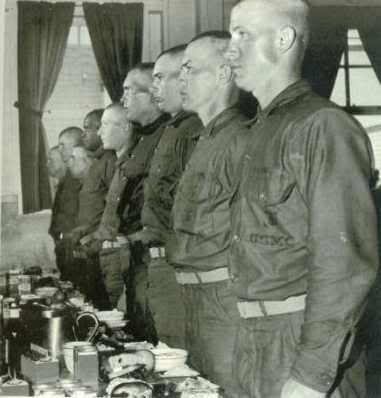
SEMPER FI MARINES
EMAIL YOUR COMMENTS, PICTURES OR INFORMATION TO:
Jim's Marine Page
BACK TO TOP





